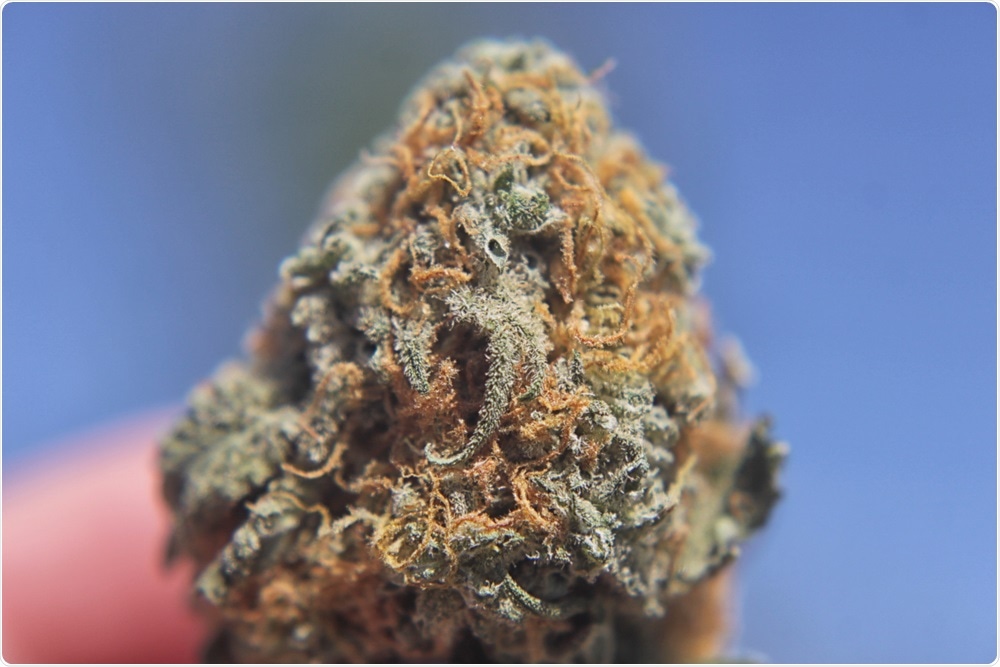Researchers have developed a smoking simulator that enables the accurate analysis and reliable detection of the combustion products that are formed when synthetic cannabinoids are smoked.
These synthetic cannabinoids are a major class of new psychoactive substances that, once inhaled through smoking a conventional or electronic cigarette, may result in unknown combustion products with unknown biologic/toxic activity.
The new smoking simulator created by Ian Blagbrough and colleagues at the University of Bath enables efficient trapping of the combustion products, a development that could help drug analysts and toxicologists examine samples from suspected users or abusers of drugs and conduct research into the biological effects of using synthetic cannabinoids.
First- and second-generation synthetic cannabinoids
The early 1990s saw the introduction of a series of synthetic cannabinoids with a core structure of naphthoylindole. This constituted the first wave of illicit SCs to emerge on the streets in 2008, with vendors promoting them as research chemicals, herbal incense and “legal highs.”
Eventually, the sale of synthetic cannabinoid products was banned through introduction of the Psychoactive Substance Act in 2016. Later, synthetic cannabinoids retaining the indole core, but with different functional group modifications were illicitly manufactured, which resulted in the availability of hundreds of second-generation products.
Continuous worldwide banning of synthetic cannabinoids by governments prompted manufacturers to create more compounds, including ones with an indazole rather than indole as the core structure and with amino acids in the head components rather than naphthalene.
These SCs, which are known by the street name “spice,” are still sold as blends of herbs such as Damiana, Marshmallow plant, potpourri that have been soaked or sprayed with synthetic cannabinoids. Analytical methods for analyzing crude samples are valuable to drug analysts, but the fact that the synthetic cannabinoids in herbal blends are generally inhaled through smoking means studies are needed to analyze the combustion products.
Synthetic cannabinoids act as agonists at the same cannabinoid receptors (CB1R and CB2R) as natural cannabinoids, but they do so with much higher potency.
Why are synthetic cannabinoid combustion products concerning?
The combustion products that arise when synthetic cannabinoids are smoked is an area that requires further research due to the possibility that potentially harmful products could be generated that would alter the target receptor or a product’s affinity for that receptor. It is especially important that the nature of any volatile combustion products is determined for a better understanding of what exactly synthetic cannabinoid users or abusers are actually inhaling.
However, simulating smoking conditions is difficult, mainly due to challenges relating to temperature and flow rate. The nitrogen atoms that are usually present in synthetic cannabinoids could cause chemical variability of combustion products due to their heat-labile C−N bonds and for smoking simulation to be accurate, a flow rate of 30 L min−1 needs to be maintained.
 Vuk Stajic | Shutterstock
Vuk Stajic | Shutterstock
A twin-trap smoking simulator
As reported in the journal Analytical Methods, Blagbrough and team have constructed a twin-trap smoking simulator that mimics human inhalation and used it to analyze different synthetic cannabinoids and to detect their combustion products.
The model is a two-stage trap rig made using two 250mL gas washing bottles half-filled with 8mm glass beads for increased surface area. The gas washing bottle heads are free of filters, with two dry ice/acetone traps allowing the efficient capture of volatile products resulting from combustion.
The traps were connected to a pump with a dial that was used to control the flow rate, which was set between 28–30 L min−1, and the temperature was monitored using a thermocouple. A herb soaked in synthetic cannabinoids was rolled into a cigarette and inserted into a quartz tube where it was then lit.
Three areas of the simulator were tested for the presence of six synthetic cannabinoids, namely, trap 1, trap 2 and the combustion zone in the quartz tube.
Successfully capturing combustion products
Analysis using ultra-high-performance liquid chromatography coupled with electrospray ionization-quadrupole-time of flight-mass spectrometry (UHPLC-ESI-Q-TOF-MS) and gas chromatography–mass spectrometry (GC-MS) enabled detection of all six synthetic cannabinoids tested. The cannabinoids demonstrated good volatility, with parent SCs being captured in the traps and little to no synthetic cannabinoids left in the combustion zone.
The apparatus enabled the efficient trapping of combustion products. Combustion of an synthetic cannabinoid called MDMB-CHMICA resulted in the formation of a novel combustion product − a dihydro-1H-pyridoindole-dione, with its structure and mechanism of formation proposed.
The researchers conclude:
This study of combustion products of synthetic cannabinoids provides markers which may be useful for drug analysts and toxicologists in examining samples obtained from suspected synthetic cannabinoid users. Thus, taken together, making reliable methods for the identification and quantification of substituted 3rd generation synthetic cannabinoids."
Journal reference:
Blagbrough, I et al. Analysis of synthetic cannabinoid agonists and their degradation products after combustion in a smoking simulator. Analytical Methods, 2019;11:3101-3107 DOI: 10.1039/C9AY00722A